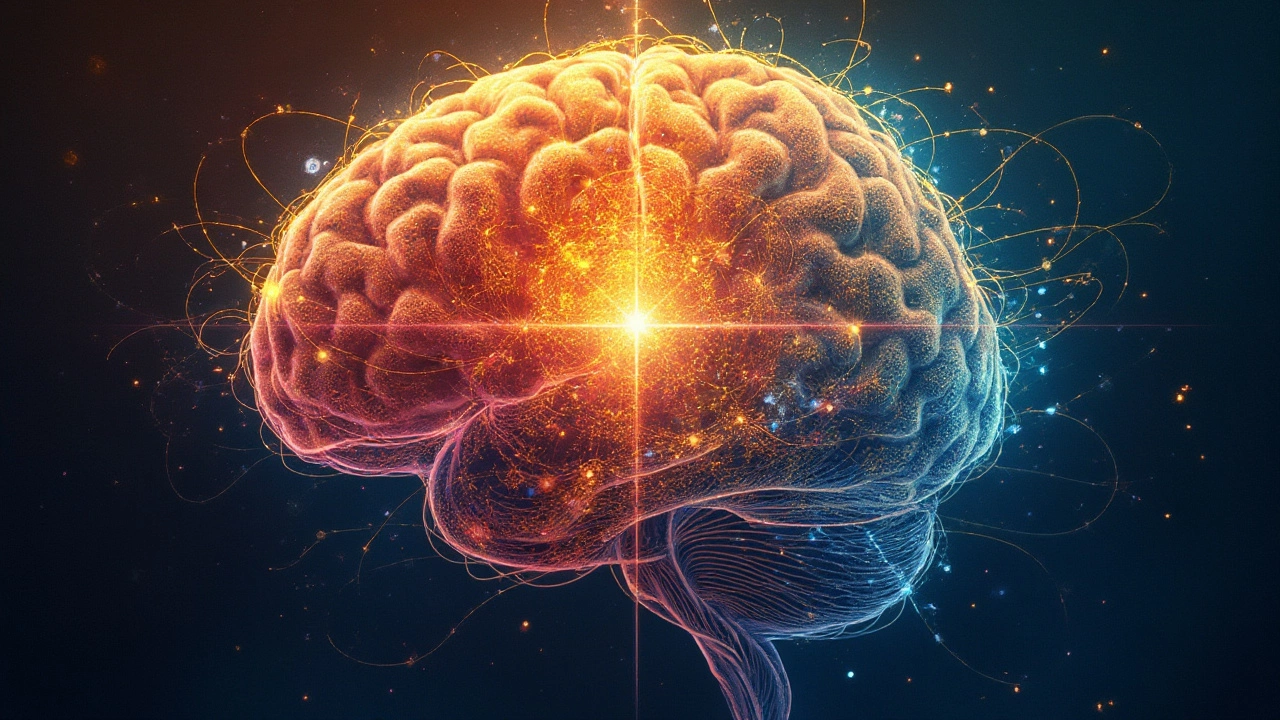In today's fast-paced world, understanding the complex mosaic of neurodevelopmental disorders can lead to more inclusive and nurturing environments. Among the conditions often discussed are ADHD, known for its attention-related issues, and the autism spectrum, which involves challenges with social skills and repetitive behaviors. As we delve into these two diverse yet sometimes overlapping worlds, it becomes crucial to distinguish and understand their unique features.
Both ADHD and autism spectrum disorder can significantly affect an individual’s daily life, from communication to cognitive processing. While they might share some common ground, like difficulty with social interactions, they each have their own distinct traits that necessitate different approaches for support and management. This exploration seeks to shed light on their relationship, focusing on the nuances that make each condition unique.
Armed with this understanding, we can better accommodate the needs of those living with these conditions. Whether it's through choosing the right office chair that provides comfort and focus or implementing broader strategies that promote a harmonious work environment, the goal is to enhance both performance and well-being.
- Defining ADHD and Autism Spectrum Disorder
- Exploring the Connection
- Differences and Similarities
- Practical Tips for Creating Supportive Environments
Defining ADHD and Autism Spectrum Disorder
Attention Deficit Hyperactivity Disorder, or ADHD, often emerges as a conversation starter when discussing neurodevelopmental disorders. It's characterized primarily by patterns of inattention, hyperactivity, and impulsiveness that are more frequent and severe than typically observed in individuals at a comparable level of development. It’s estimated that around 5% of children worldwide exhibit symptoms of ADHD, carrying these challenges into adulthood in many cases. The condition manifests in varying degrees, from trouble concentrating and staying organized to extreme hyperactivity.
Unlike ADHD, Autism Spectrum Disorder (ASD) is characterized by a range of conditions that impact social skills, repetitive behaviors, and nonverbal communication. The notion of a 'spectrum' reflects the wide variation in challenges and strengths possessed by individuals with autism. According to the CDC, about 1 in 54 children in the United States is diagnosed with ASD, highlighting its prevalence in today's society. Those on the autism spectrum might find social interactions challenging, exhibiting repetitive behaviors or singular intense interests. It's worth noting that autism isn’t a single condition but rather an umbrella for a variety of behaviors and traits that can appear in many combinations.
"Both ADHD and autism spectrum disorder serve as a testament to the brain’s incredible variability," states Dr. Stephen M. Kanne, Clinical Director at the Center for Autism and the Developing Brain.
Though ADHD and ASD are distinct, there's often an overlap in symptoms and challenges faced by individuals. Each condition affects cognitive functioning and development uniquely, necessitating varied approaches for diagnosis and support. This distinction is vital for parents, educators, and even businesses, like those manufacturing office chairs, to understand how best to accommodate these varying needs. Understanding the specifics of each condition aids in creating environments that enhance focus and reduce stress, catering to the nuanced requirements of these individuals.
It's crucial to highlight that both ADHD and autism spectrum share certain similarities in terms of how they impact day-to-day life. Both disorders can involve difficulties with communication and interpersonal relationships, adding layers to their complexity. Navigating through these difficulties requires careful consideration and often a customized approach, especially in professional or educational settings. This is where understanding each condition's unique footprint can significantly help in designing strategies or tools—like ergonomic office chairs—to optimize comfort and productivity.

Exploring the Connection
The relationship between ADHD and the autism spectrum often puzzles both the medical community and families alike. Both conditions have complex layers contributing to their enigmatic nature. While ADHD mainly affects attention span and impulse control, autism spectrum disorder encompasses a wider range of symptoms affecting communication, behavior, and interaction. Yet, several underlying neurobiological and genetic factors link these two. Researchers have identified a shared genetic architecture, indicating that some of the same genes are implicated in both neurodevelopmental disorders. Understanding differences in the nuances of these conditions can aid in providing better, more targeted interventions that address specific characteristics resulting from these genetic overlaps.
Examining the neurological basis, several studies using brain imaging techniques have revealed overlapping areas of concern. For example, parts of the brain related to executive function, which is crucial for attention and decision-making, appear affected in both ADHD and autism. This neurological pattern often leads to difficulties in maintaining attention and developing social skills. A large percentage of children diagnosed with autism also display symptoms consistent with ADHD, underscoring a possible connection needing further exploration.
'The convergence we see sometimes between autism spectrum disorders and ADHD represents a fascinating intersection warranting further detailed research,' points out Dr. James McGowan, a leading psychologist in neurodevelopmental studies.As science unravels these intersections, it becomes clearer that there is a profound need for tailored strategies catering to the unique presentation of each condition.
Modern technology and educational awareness have fueled a significant increase in the diagnosis rates of both ADHD and autism. Parents and educators often notice the behavioral signs at an early age, triggering a journey of consultations, tests, and comprehensive assessments. As a result, many children are now diagnosed with both conditions, a reality healthcare providers call 'co-occurrence.' Though the conditions are distinct, their co-existence suggests that having more tools and knowledge at disposal early on can enhance outcomes. Recognizing and managing these complexities at a young age helps build essential life skills and resilience. Strategies such as individualized education plans (IEPs) and behavioral therapy, combined with medication when necessary, can provide scaffolding for growth and development, ensuring that each child's unique strengths are maximized.

Differences and Similarities
It’s often easy to confuse ADHD and the autism spectrum due to their overlapping symptoms, yet understanding their unique differences is crucial for proper diagnosis and support. On one hand, ADHD primarily affects one's ability to maintain attention and control impulses. Individuals with ADHD may showcase a constant need for movement or display impulsive behavior that can cause disruptions in various settings. On the other hand, autism spectrum disorder is characterized by challenges in social communication and restricted, repetitive behaviors. People on the autism spectrum might struggle to understand social cues, making social interactions challenging, alongside an insistence on routine and specific interests.
Despite these distinctions, there are points where ADHD and the autism spectrum might intersect. For instance, both conditions can involve sensory processing issues and difficulties in regulating emotions. This makes it helpful to consider behaviors contextually. Where ADHD might present as restlessness due to an inability to focus, similar restlessness in autism could stem from sensory overload or changes in routine.
Statistically, research has shown that the co-occurrence of ADHD and autism spectrum disorder is quite significant, with estimates suggesting that 30-50% of individuals with autism also meet the criteria for ADHD. Interestingly, a study published in The Lancet Psychiatry pointed out that shared genetic factors might contribute to these conditions co-existing, emphasizing the need for a comprehensive clinical approach when diagnosing and providing support. As Dr. Stephen Faraone, a leading researcher in ADHD studies, once said,
"Understanding the intertwined complexities of ADHD and autism is pivotal for improving the quality of life for countless individuals and their families."
In a supportive environment, recognizing these differences and similarities allows caregivers, educators, and employers to tailor strategies that cater to both conditions. Providing structured environments, clear communication, and appropriate sensory inputs can greatly aid individuals facing these challenges. For instance, selecting the right office chair, responsive to some of the sensory and attentional needs of individuals, can markedly improve both comfort and productivity.

Practical Tips for Creating Supportive Environments
Creating a supportive environment for individuals with ADHD and those on the autism spectrum goes beyond understanding and empathy; it involves concrete action steps tailored to individual needs. A key area of focus is optimizing physical spaces to reduce stressors and enhance concentration. This might mean selecting sensory-friendly furniture and decor that minimizes distractions. For instance, office chairs with adjustable features such as lumbar support, seat height, and armrests can accommodate unique postures and encourage better body alignment, which is crucial for maintaining focus and comfort. Quiet zones or sectioned-off areas might be essential in workplaces to provide refuge from stimulus overload, a common issue faced by those on the autism spectrum.
A supportive environment also considers lighting. Harsh fluorescent lights could be replaced with softer, natural lighting to reduce sensory overload and cultivate a soothing atmosphere. Incorporating organizational tools, like color-coded files or digital reminders, can assist individuals with ADHD in managing tasks effectively. These changes are not just pleasant touches; they have profound impacts on productivity and mental well-being. For instance, color-coded systems provide visual cues that not only help with organization but also alleviate the cognitive load of remembering numerous details.
A supportive environment must also include clear communication protocols. For instance, establishing routines with predictable schedules can offer the consistency that some individuals thrive on. Developing guidelines for communication, such as direct and clear instructions, benefits everyone by reducing misinterpretations. Training programs aimed at raising awareness among coworkers are equally vital. Raising awareness helps create a culture of inclusion where differences are acknowledged positively. As Dr. Temple Grandin once said,
"Different, not less."is paramount in shifting perceptions and fostering environments where neurodiverse individuals can excel.
Moreover, technology can play a powerful role in support. Applications and devices designed to aid focus, task management, and time-keeping can be incredibly beneficial. For instance, noise-cancelling headphones can help block out distracting background noises in bustling office environments. Similarly, apps that offer notifications and reminders allow those with attention difficulties to keep track of their tasks efficiently. Regular feedback sessions can also pave the way for improvements in the workplace, ensuring that the strategies remain relevant and effective. Ultimately, building environments that support neurological diversity not only helps individuals thrive, but breeds innovation and adaptability as a byproduct of inclusive practices.

